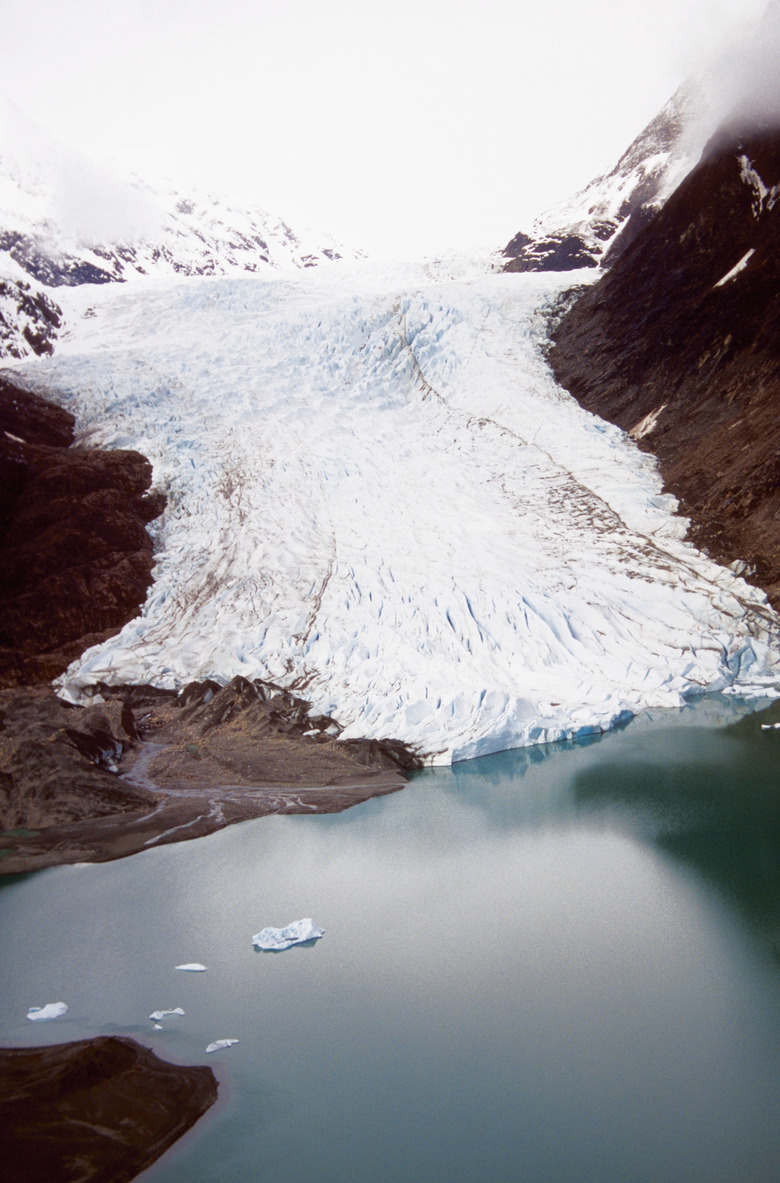Long & Short Term Effects Of Global Warming
The phenomenon of global warming, a gradual rise in the Earth's average temperature often associated with greenhouse gases, has already produced many observable short-term effects. In addition to these, climate scientists have predicted long-term effects by taking into account rates of fossil-fuel consumption and trends in solar output. Although not all scientists agree on every prediction, the majority foresee major reductions in glacial ice, large ecological shifts and rising ocean levels.
Shrinking Glaciers
Shrinking Glaciers
Glaciers are large, semi-permanent masses of ice found in cold regions; over many years, snow accumulates and compresses under its own weight to form ice. During the last Ice Age, glaciers covered an estimated 32 percent of the Earth's land surface; currently, they amount to about 10 percent. Their large size and stability over centuries has led to scientific interest in these icy bodies. Increased temperatures have led to conditions where glaciers are melting faster than new snowfalls have historically maintained or added to their size. Since the mid-20th century, reductions in glacier size have been well-documented; global warming may cause some to disappear altogether.
Longer U.S. Growing Season
Longer U.S. Growing Season
A study published by the United States Department of Agriculture predicts that the eastern half of the U.S. will lose about five frost days per year, and the West will lose up to 20 by the year 2030. The same study asserts that, in the same time frame, the growing season in the U.S. will gain about 15 to 30 days per year. At temperate latitudes in the 19-year period from 1990 to 2009, Spring began 10 to 14 days earlier.
Biome Changes
Biome Changes
According to a NASA study, global temperature increases will change plant communities across about half of the Earth's surface by 2100. Forests, tundra, grasslands and other kinds of plant communities will change from one major type to another. Because plants and animals coexist in systems scientists call biomes, the animals that depend on the plants will likely have to adapt, migrate or perish. According to NASA, the northern hemisphere, including the U.S., Canada and Russia, is at a particularly high risk for these changes.
Rising Ocean Levels
Rising Ocean Levels
Climatologists have predicted that over many decades, melting of polar ice will release large amounts of water into the world's oceans, which will in turn raise their levels. The National Oceanic and Atmospheric Administration forecasts a rise in ocean levels from about 32 to 64 inches through the year 2100, with the current change amounting to 0.12 inches per year. Since 1870, ocean levels have already increased by 8 inches, and the trend appears to be accelerating. This will have the greatest potential impact on coastal land areas, which will become flooded or will require large artificial barriers; large human populations call these regions home or depend on them economically.
Cite This Article
MLA
Papiewski, John. "Long & Short Term Effects Of Global Warming" sciencing.com, https://www.sciencing.com/long-short-term-effects-global-warming-11401/. 24 April 2017.
APA
Papiewski, John. (2017, April 24). Long & Short Term Effects Of Global Warming. sciencing.com. Retrieved from https://www.sciencing.com/long-short-term-effects-global-warming-11401/
Chicago
Papiewski, John. Long & Short Term Effects Of Global Warming last modified March 24, 2022. https://www.sciencing.com/long-short-term-effects-global-warming-11401/
